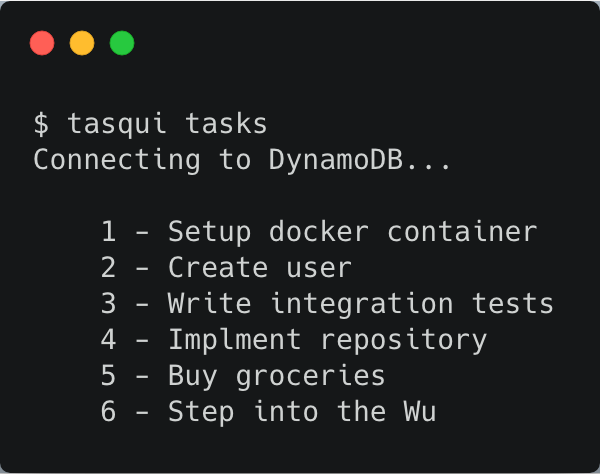
- Por André Guelfi Torres
- ·
- Publicado 16 Apr 2019
AWS Lambda is a compute service from Amazon. It makes deployment and provisioning very simple and fits very well with microservices based architecture. You can find out more about AWS Lambda here. Currently supported platforms are JVM, Node JS and Python.
The programming model for the lambdas consists of Handler, Context Object, Logging and Exceptions. These are described here. Lambda must not hold state because they are brought up and down and replicated as needed. Persistent state should be stored in a service that is outside the lifecycle of the lambda such as Amazon DynamoDB, S3 etc.
First of all follow the instructions here to setup an AWS Account and AWS Command-line Interface and note down your account id. You'll need to add billing information to your account even though this exercise will not incur charges.
The most basic lambda will look like the following in Python:
def lambda_handler(event, context):
return "Hello World!"
or like the following in Java:
package example;
import com.amazonaws.services.lambda.runtime.Context;
public class Hello {
public String lambdaHandler(String event, Context context) {
return "Hello World!";
}
}
You can follow the, somewhat lengthy, instructions here to deploy this function … but that’s no fun! Let’s do it devops style ;)
Paste the above Python code in a file called helloworld.py. If you want to use the Java version then follow the instructions here to build your lambda and create a deployment package using Maven.
Create a trust.json file . The trust allows our function to assume the role of an AWS Lambda.
In trust.json we are allowing the function to assume the role of a lambda.amazonaws.com service, otherwise the infra will not allow our function to run.
{
"Version": "2012-10-17",
"Statement": [{
"Sid": "",
"Effect": "Allow",
"Principal": {
"Service": "lambda.amazonaws.com"
},
"Action": "sts:AssumeRole"
}]
}
Create the following script (deploy.sh). Note: the script assumes that you have the AWS_ACCOUNT_ID environment variable set.
#!/bin/bash
### Ensure the variable AWS_ACCOUNT_ID is set
# http://stackoverflow.com/questions/3601515/how-to-check-if-a-variable-is-set-in-bash
if [ -z ${AWS_ACCOUNT_ID+x} ]; then
echo "variable AWS_ACCOUNT_ID is not set"
exit 1
fi
### Create the lambda package
zip -j helloworld.zip *.py
### Create the role for the lambda to assume
role="helloworld_exec_role"
trust="trust.json"
aws iam create-role --role-name $role --assume-role-policy-document file://$trust
aws iam update-assume-role-policy --role-name $role --policy-document file://$trust
### Create the lambda function
function_name="helloworld"
handler_name="helloworld.lambda_handler"
package_file=helloworld.zip
runtime=python2.7
aws lambda create-function \
--function-name $function_name \
--handler $handler_name \
--runtime $runtime \
--memory 512 \
--timeout 60 \
--role arn:aws:iam::${AWS_ACCOUNT_ID}:role/$role \
--zip-file fileb://$package_file
or for Java:
#!/bin/bash
### Ensure the variable AWS_ACCOUNT_ID is set
# http://stackoverflow.com/questions/3601515/how-to-check-if-a-variable-is-set-in-bash
if [ -z ${AWS_ACCOUNT_ID+x} ]; then
echo "variable AWS_ACCOUNT_ID is not set"
exit 1
fi
### Create the lambda package
mvn package
### Create the role for the lambda to assume
role="helloworld_exec_role"
trust="trust.json"
aws iam create-role --role-name $role --assume-role-policy-document file://$trust
aws iam update-assume-role-policy --role-name $role --policy-document file://$trust
### Create the lambda function
function_name="helloworld"
handler_name="example.Hello::lambdaHandler"
package_file="target/lambda-java-example-1.0-SNAPSHOT.jar"
runtime="java8"
aws lambda create-function \
--function-name $function_name \
--handler $handler_name \
--runtime $runtime \
--memory 512 \
--timeout 60 \
--role arn:aws:iam::${AWS_ACCOUNT_ID}:role/$role \
--zip-file fileb://${package_file}
Make the script executable chmod +x deploy.sh and deploy your lambda ./deploy.sh. You may get the following error: "The role defined for the function cannot be assumed by Lambda." This is because the role has not been replicated through in the Amazon infra. Just run the deploy script again. It will complain that the role already exists but this time the lambda creation should pass. In the future we will look at a status check to make sure that the role has been fully created before we deploy the function.
Invoke your lambda with the below command. You should see the result in the file called output.txt
aws lambda invoke --invocation-type RequestResponse --function-name helloworld --payload '[""]' output.txt
To delete the lambda function and then the role paste the following in delete.sh
#!/bin/bash
role="helloworld_exec_role"
function_name="helloworld"
aws lambda delete-function --function-name $function_name
aws iam delete-role --role-name $role
Then make the script executable chmod +x delete.sh and execute ./delete.sh
... and wait for the next post on AWS frolics



Software es nuestra pasión.
Somos Software Craftspeople. Construimos software bien elaborado para nuestros clientes, ayudamos a los/as desarrolladores/as a mejorar en su oficio a través de la formación, la orientación y la tutoría. Ayudamos a las empresas a mejorar en la distribución de software.